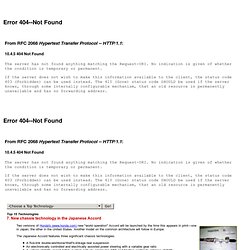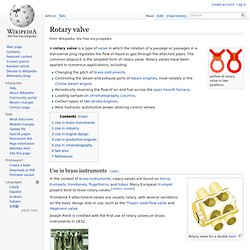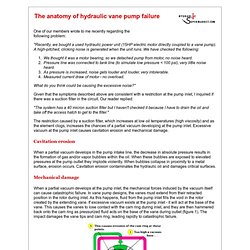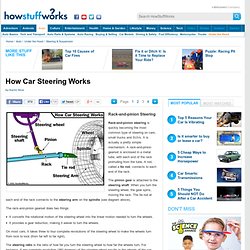

RcTek - Radio Controlled Model Car Handling - The Ackerman Steering Principle. This article is part of a section of the RcTek site devoted to radio controlled model car handling.

As car handling is an extremely complex subject, it will be quite some time before it is finished. This article deals with the Ackerman Steering Principle, which is sometimes referred to as toe-out on turn. Ackerman Steering Principle The Ackerman Steering Principle defines the geometry that is applied to all vehicles (two or four wheel drive) to enable the correct turning angle of the steering wheels to be generated when negotiating a corner or a curve.
Before this principle was developed the vehicles of the time (horse drawn) were fitted with parallel steering arms and suffered from poor steering performance. Why & How? 1298t07l.gif (GIF Image, 400 × 233 pixels) Automotive Engineering International Online. Two versions of Honda's (www.honda.com) new "world operation" Accord will be launched by the time this appears in print—one in Japan, the other in the United States.

Another model on the common architecture will follow in Europe. The Japanese Accord features three significant chassis technologies: A five-link double-wishbone/Watt's-linkage rear suspension An electronically controlled and electrically assisted power steering with a variable gear ratio A vehicle stability assist (VSA) system actively employing ABS and traction control to enhance stability. The Ohio-made Accord adopts the new rear suspension, but not the other two. Honda presented a significant research contribution by engineer-theoretician Y. Shibahata and his team have produced an advanced yaw control technology, the Active Torque Transfer System (ATTS), which was adopted in the top model in the recently updated Honda Prelude coupe range. Rear suspension As its name indicates, the new rear suspension employs five links.
Rotary valve. Airflow of rotary valve in two positions A rotary valve is a type of valve in which the rotation of a passage or passages in a transverse plug regulates the flow of liquid or gas through the attached pipes.

The common stopcock is the simplest form of rotary valve. Rotary valves have been applied in numerous applications, including: Changing the pitch of brass instruments.Controlling the steam and exhaust ports of steam engines, most notably in the Corliss steam engine.Periodically reversing the flow of air and fuel across the open hearth furnace.Loading sample on chromatography columns.Certain types of two-stroke engines.Most hydraulic automotive power steering control valves. Use in brass instruments[edit] Trombone F-attachment valves are usually rotary, with several variations on the basic design also in use, such as the Thayer axial-flow valve and Hagmann valve. Joseph Riedl is credited with the first use of rotary valves on brass instruments in 1832.
Use in industry[edit] See also[edit] Preview_html_4d14dd68.png (PNG Image, 400 × 300 pixels) Steering-rotary-valve.jpg (JPEG Image, 369 × 292 pixels) The anatomy of hydraulic vane pump failure. One of our members wrote to me recently regarding the following problem: "Recently, we bought a used hydraulic power unit (15HP electric motor directly coupled to a vane pump).

A high-pitched, clicking noise is generated when the unit runs. We have checked the following: We thought it was a motor bearing, so we detached pump from motor, no noise heard. Pressure line was connected to tank line (to simulate low pressure < 100 psi), very little noise heard. What do you think could be causing the excessive noise? " Given that the symptoms described above are consistent with a restriction at the pump inlet, I inquired if there was a suction filter in the circuit. "The system has a 40 micron suction filter but I haven't checked it because I have to drain the oil and take off the access hatch to get to the filter.
" Cavitation erosion. Vane Pump. HowStuffWorks "How Car Steering Works" Rack-and-pinion steering is quickly becoming the most common type of steering on cars, small trucks and SUVs.

It is actually a pretty simple mechanism. A rack-and-pinion gearset is enclosed in a metal tube, with each end of the rack protruding from the tube. A rod, called a tie rod, connects to each end of the rack.